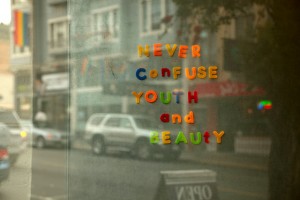
This short essay was part of a CCF series in February 2013 in honor of the 50th Anniversary of Betty Friedan’s The Feminine Mystique.
Today, a male manager who selected only young, beautiful women employees would be seen as a Neanderthal. But in the personal sphere, when a 50 year-old single man dates only much younger women, and chooses one to marry, few of his friends question his sense of entitlement to a younger woman.
Unlike “the feminine mystique,” which Friedan described as a set of internalized stereotypes that led women to make “mistaken” choices in their personal lives, the youth mystique comes largely from the choices of men, and few Americans fault them for exercising their preferences. Sociologist Elizabeth McClintock and I examined marriage licenses taken out between 1970 and 1988. We found that the older a man is when he marries, the more likely he is to choose a woman much younger than himself.
Men under 30 typically marry women less than 2 years their junior. But men who marry in their 30s tend to marry women 4 years younger. Men in men their 40s typically choose a bride who is 6 years younger, and men over 60 marry women who are on average 8 years younger. It appears that the older men are when choosing a partner, the less attractive women their own age look compared to a youthful ideal, and the more they want a wife younger than themselves.
This makes it difficult for older women to find mates. Largely as a result of this pattern, we calculated that the number of single men available for every 100 single women goes down by age: 85 for 36 to 45, 70 for those 46-55, and less than 60 for those 56 to 65 years of age. No wonder women feel a need to spend so much energy trying to make themselves look younger!
Despite the media hype about “cougars” – older women stalking younger men — we found no parallel pattern for women. They marry partners within a few years of their age no matter how old they are when they marry.
Just as today we question ageism in employment decisions, maybe we should question youth-biased standards in our private lives—especially when only men are seen as entitled to a younger partner. In the long run, moreover, men as well as women may be ill-served by the youth mystique.
This is because the youth mystique also affects divorce, only it does so in a more gender neutral way. In research I am currently doing with sociologists Paul Allison and Liana Sayer, we use a national survey that asked ex-spouses which one wanted the breakup more. Men were most likely to initiate a divorce when their wives were at least three years their senior. But the same held for women—they too were most likely to leave a partner more then three years older than themselves. In fact, for both men and women, the more their spouse’s age exceeded theirs, the likelier they were to initiate a divorce.
The younger partner tends to leave the older, regardless of gender. So just as Friedan argued for women about the feminine mystique, the youth mystique may be leading men to make mistaken choices that will leave them less happy in the long run.

Comments 1
The Youth and Beauty Mystique: Its Costs for Women AND Men - Treat Them Better — January 26, 2015
[…] The Youth and Beauty Mystique: Its Costs for Women AND Men […]